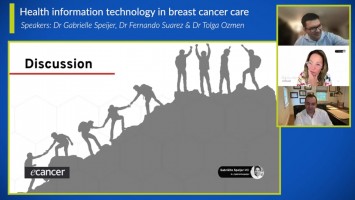Thank you and good afternoon. My name is Julie Jaffray, I’m at the Children’s Hospital Los Angeles. For the next few minutes I’m going to talk to you about how we have determined the incidence, and we’re looking at the risk factors, for central venous catheter associated thrombosis in children. This study by Leslie Raffini published in 2009 in Paediatrics looks at rates of hospital acquired VTE in children over a seven year period. What they noticed was that it didn’t matter what age the child was, this rate of VTE went up dramatically by 70%. We also noted that these children who got the VTE in this study had increased mortality as well as increased hospital stay. So why do we think there is this increased VTE rate in our kids? We’re doing a better job taking care of our really sick kids and they’re living longer but that makes them at risk for a VTE. We’re also looking at them more, we’re thinking about VTE more, our detection methods are better but the biggest reason is we’re increasing our use of central venous catheters in children.
So I created this study to actually look at the incidence and the risk factors for central venous lines in our kids, called the CIRCLE study. It’s prospective, it’s observational and it’s multi-centre of four children’s hospitals across the US. Our aim is to look at both the incidence as well as different risk factors for our children when they get two different types of line placed. One are peripherally inserted central catheters, the other are tunnel lines. Now, I know I’m in the press so I wanted to help you guys understand what that means – the tunnel lines are placed centrally, tunnelled under the skin by the clavicle. There are different types, there’s single lumens, there’s double lumens and then there’s an implanted portacath, versus the PICs which are peripherally inserted here in the arm and then they go up the arm and they also end centrally like the tunnel line.
What we did is we took children six months to less than 18 years who had a newly placed line. This study is still ongoing, I’m going to be presenting preliminary results. We then, once the child got the line in place, followed them through their medical record looking at things like age, different demographics, how the line was placed, what type, what vein was used, was ultrasound used. Then we would check periodically to see if they got an infection or a blood clot. Just to let you know, we did not screen so some studies actually look for VTEs in their patients regardless of symptoms, we did not do that in this study.
We have an update from what’s in the abstract, we now have 1,200 CVCs, about 1,100 subjects, that are reported in the results that I’ll be talking about more tomorrow. One-third are from tunnel lines, two-thirds are PICs. What we found was the combined incidence of all CVCs, the rate of VTE was 5.7% but when we separated those two different types of lines you can see this dramatic difference. The PICs had an incidence of 7.5% of VTE versus the tunnel lines which were only 2%. We noted 85% of our VTEs were in patients who had PICs. We also looked at infection – how often did these central lines give the patient infection? We call this a CLABSI – central line associated blood stream infection. Overall it was 12%; when we separated quite the opposite – the tunnel lines had 16% versus the PICs that were 9%.
So we also noted a few other things that showed an increased risk of VTE with these preliminary results. One, patients with cancer, especially leukaemia, congenital heart disease and those with multi-lumen CVCs. So the next step, we’re going to continue to enrol subjects, we’re going to hopefully create guidelines once we hit our 2,000 subjects that we’re hoping to have in there to determine what type of central line, what patients to put each type of central line and if some people require anti-coagulation prophylactically.
In summary, there’s an increased rate of VTE in our kids. There are significantly higher rates in those with PICs, those with cancer, congenital heart disease, those with multi-lumen CVCs and we noticed tunnelled lines had an increased rate of infection versus PICs. These are my colleagues and group and thank you.








